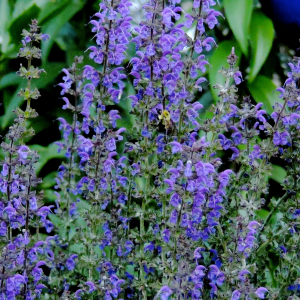 The Mighty Monkshood
The Mighty Monkshood
I did a big garden clean out yesterday, and today I tune up the leaf blower and take out a few more air conditioners. There is a promise of afternoon sun today, and if it really happens that’s where I’ll be, but sun or no sun, it’s undeniable now, the season is rapidly racing along. With the leaves falling, the sun weakening, the daylight hours shrinking; with everything seemingly leaving or diminishing, I am thrilled to announce the mighty monkshood have just marched in and it’s as if they want to say, “Not so fast everyone, we’re just getting warmed up.” Throughout the yard the gardens are now full of deep indigo blue, thanks to the mighty Monkshood.
Monkshood commands respect for many reasons. On the outside Monkshood is strikingly beautiful, but it’s a plant of staggering contrast because it’s not simply a pretty thing to look at, it’s also deadly poisonous. It only blooms in October, the very last flower to bloom, but it is also the first to grow in the spring, breaking through the newly thawed ground in March. Most plants that break ground in March are done by the end of May. Not the monkshood. Its protracted growing season is drawn out until the very end of the fall. Waiting all spring and summer and much of the fall, surviving drought conditions and tremendous heat, many of the stalks die along the way, but the plant is prolific—as if it expects to be fighting a war of attrition. Finally, when everything else is long past flowering, the toughest monkshood, the ones that survived seven months, decide to put on a spectacular show, one of the best testaments to persistence, determination and GRIT!!!
At its peak the solitary stalk reaches more than six feet tall, yet it holds its position for seven months through driving rain and whipping wind, icy cold frost and the oppressive summer heat that burns out the lawn and wilts nearly every other plant. The stately monkshood grows a solitary stalk from each bulb and that bulb is anchored by a tiny and shallow root system. I don’t know how such a small root system can anchor such a tall plant. While each bulb produces just one stalk, it also creates several new bulbs that grow along its tiny root system and these bulbs produce their first stalks the following year. Each year I have to thin out the new plants and that’s how the yard has become home to more than 150 plants, from just 3 at the start.
From a position in our family room or eating area you can look out any window and find yourself surrounded by blue. Many people walk by and ask about these magnificent specimens. One day I caught the mushroom hunters in our yard harvesting from the towering oak near the road and they had a lot to say about the gardens. They knew the Latin name and history of nearly every plant. Mistakenly they thought I had the botanical background to appreciate that. But they were most amazed by the monkshood, claiming that in all their travels (and these two people get around) they had never seen such a massive display of the plant.
The plant will only stop blooming now when the ground freezes solid.
Last plant standing, the mighty monkshood. Carry on.